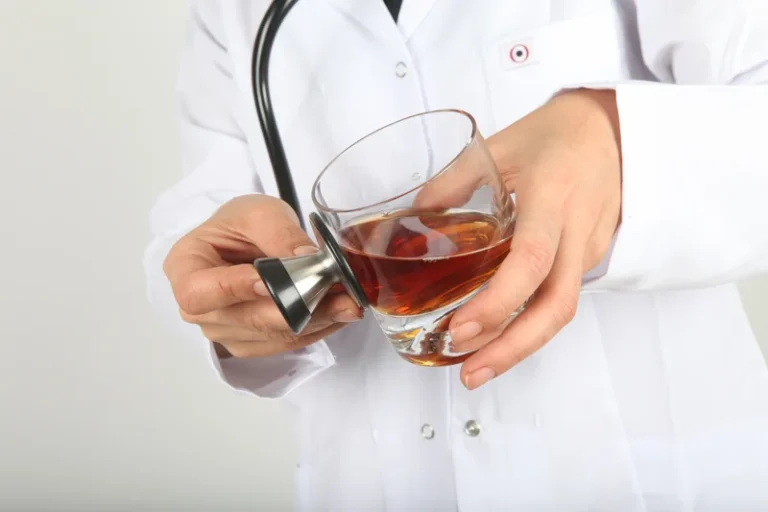Controlled Drinking vs Abstinence Addiction Recovery

Additionally, some groups target individuals with co-occurring psychiatric disorders (Little, Hodari, Lavender, & Berg, 2008). Important features common to these groups include low program barriers (e.g., drop-in groups, few rules) and inclusiveness of clients with difficult presentations (Little https://ecosoberhouse.com/ & Franskoviak, 2010). It is important to highlight that most of the studies cited above did not provide goal-matched treatment; thus, these outcomes generally reflect differences between individuals with abstinence vs. non-abstinence goals who participated in abstinence-based AUD treatment.
- Most people who seek out moderation management (MM) have already tried and been unsuccessful at stopping drinking or cutting down on their use.
- Alcohol moderation management programmes are often successful when tailored to an individual’s specific needs and circumstances.
- The most recent national survey assessing rates of illicit drug use and SUDs found that among individuals who report illicit drug use in the past year, approximately 15% meet criteria for one or more DUD (SAMHSA, 2019a).
- This mental clarity also enhances productivity at work or in pursuing personal hobbies because there’s no longer a hangover holding you back.
- However, this single drinking event cutoff for “success or failure” lacks validity (Pearson, Kirouac, & Witkiewitz, 2016) and is not a good cutoff for delineating functioning following treatment (Wilson, Bravo, Pearson, & Witkiewitz, 2016).
Low Risk Drinking Outcomes and Longer Term Functioning
- Participants with controlled use goals in this center are typically able to achieve less problematic (38%) or non-problematic (32%) use, while a minority achieve abstinence with (8%) or without (6%) incidental relapse (outcomes were not separately assessed for those with AUD vs. DUD; Schippers & Nelissen, 2006).
- Besides, alcohol affects your sleep quality and mental health too; it’s not uncommon for people who drink regularly to struggle with anxiety or depression.
- In addition, lower BIC and aBIC indicates a better fitting model (Nylund et al., 2007) and the smallest class of any class-solution should not contain less than 5% of the sample (Nagin, 2005).
- Separate network meta-analyses by intervention types (psychosocial interventions, drug, or combined drug interventions) were conducted to check the robustness of results to the possibility that treatment effects were not transitive across different approaches of studies to intervention.
- If your reason for choosing abstinence is simply that you want to, that’s a perfectly valid reason to quit alcohol altogether.
- The results of the Sobell’s studies challenged the prevailing understanding of abstinence as the only acceptable outcome for SUD treatment and raised a number of conceptual and methodological issues (e.g., the Sobell’s liberal definition of controlled drinking; see McCrady, 1985).
This standard persisted in SUD treatment even as strong evidence emerged that a minority of individuals who receive 12-Step treatment achieve and maintain long-term abstinence (e.g., Project MATCH Research Group, 1998). The dearth of data regarding individuals in long-term recovery highlights theneed to examine a sample that includes individuals with several years of recoveryexperience. Moreover, although previous studies have examined treated, non-treated controlled drinking vs abstinence andgeneral population samples, none has focused on individuals who identifythemselves as “in recovery” from alcohol problems. Instead, paststudies have equated “recovery” with DSM-IV diagnostic criteria and nationalguidelines for low-risk drinking; these criteria may exclude people who considerthemselves “in recovery.” For example, individuals involved in harmreduction techniques that do not involve changed drinking may consider themselves inrecovery.
- Take our short alcohol quiz to learn where you fall on the drinking spectrum and if you might benefit from quitting or cutting back on alcohol.
- When out for a nice dinner or attending a get-together, she still wanted the freedom of having a drink or two.
- The 12-step approach is widely adopted by alcohol treatment facilities (Galanter, 2016) endorsing total abstinence as the treatment goal.
- Early attempts to establish pilot SSPs were met with public outcry and were blocked by politicians (Anderson, 1991).
Current Study

The negative effects of your drinking may have turned you off of alcohol entirely, and that’s completely okay. If your reason for choosing abstinence is simply that you want to, that’s a perfectly valid reason to quit alcohol altogether. When people aiming for abstinence make a mistake, they may feel like quitting is impossible and give up entirely. You can have an occasional drink without feeling defeated and sliding deeper into a relapse. All analyses were performed in STATA MP15, assuming random effects for intervention effects and fixed effects for study baselines within a frequentist framework.2228 Networks were plotted using Gephi (version 0.9.2).29 The dataset used for computing the analyses is available in the data.bris repository. Alcohol can fog your thinking processes and impair judgment, but once you eliminate it from your routine, you’ll likely find yourself thinking more clearly and making better decisions.
Total Alcohol Abstinence vs. Moderation: Which One Wins in the End?
Witkiewitz also arguedthat the commonly held belief that abstinence is the only solution may deter someindividuals from seeking help. A common objection to CD is that most people fail to return to “normal” drinking, and highlighting those able to drink in a controlled way might attract people into relapse, with severe medical and social consequences. On the other hand, previous research has reported that a major reason for not seeking treatment among alcohol-dependent people is the perceived requirement of abstinence (Keyes et al., 2010; Wallhed Finn et al., 2014, 2018).
1 What Is Recovery? study

Researchers have long posited that offering goal choice (i.e., non-abstinence and abstinence treatment options) may be key to engaging more individuals in SUD treatment, including those earlier in their addictions (Bujarski et al., 2013; Mann et al., 2017; Marlatt, Blume, & Parks, 2001; Sobell & Sobell, 1995). To date, however, there has been little empirical research directly testing this hypothesis. Advocates of nonabstinence approaches often point to indirect evidence, including research examining reasons people with SUD do and do not enter treatment.
Severity of alcoholism is the most generally accepted clinical indicator of the appropriateness of CD therapy (Rosenberg, 1993). Untreated alcohol abusers probably have less severe drinking problems than clinical populations of alcoholics, which may explain their higher levels of controlled drinking. But the less severe problem drinkers uncovered in nonclinical studies are more typical, outnumbering those who “show major symptoms of alcohol dependence” by about four to one (Skinner, 1990). Alcoholic remission many years after treatment may depend less on treatment than on posttreatment experiences, and in some long-term studies, CD outcomes become more prominent the longer subjects are out of the treatment milieu, because patients unlearn the abstinence prescription that prevails there (Peele, 1987). By the same token, controlled drinking may be the more common outcome for untreated remission, since many alcohol abusers may reject treatment because they are unwilling to abstain.
Take Our Substance Use Self-Assessment
A key aspect of abstinence is understanding and navigating through the withdrawal process – a daunting task indeed but necessary for recovery. The severity of these symptoms can vary widely depending on how much you are drinking, how frequently, and your overall physical health. It’s heartbreaking to see loved ones caught in the grip of addiction, but there’s hope – research shows that many people find success with programmes aimed at reducing consumption. Alcohol moderation management programmes are often successful when tailored to an individual’s specific needs and circumstances. The effectiveness of these programmes can greatly vary depending on several factors such as treatment duration, individual factors, and programme challenges.
